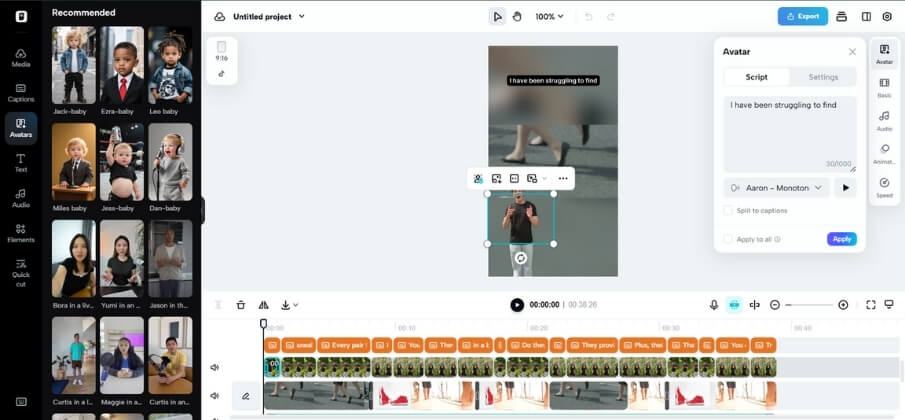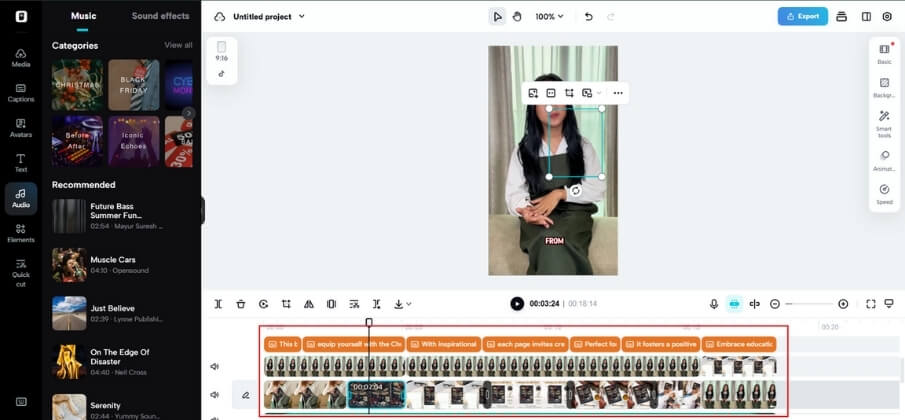Imagine this: a company shoots a high-gloss 3-minute product demo. Rather than manually remastering it for TikTok, Instagram Reels, YouTube Shorts, LinkedIn, and their own website, they use AI such as Pippit, an AI video generator. This is the magic of Pippit. Marketers no longer view content as a one-and-done opportunity. They view it as a living thing, a master narrative broken into chapters, each speaking to a different audience in a different manner.
Welcome to the “cut once, publish everywhere” age, where efficiency converges with creative inspiration.
Trimming Time, Not Creativity: The AI Revolution in Action
- Manual editing offers no chance to keep up with current content speeds.
- AI streamlines the process by identifying important moments through vision, sound cues, and audience responses.
- It creates targeted, powerful short videos automatically.
How it differs:
- Converts widescreen content to vertical formats for social media.
- Keep speakers on screen and centered automatically.
- Assumes optimal video length according to each platform’s trend.
- It’s smart storytelling—done smarter, not harder.
One Story, Many Voices: Dynamic Voiceovers for Every Audience
Tone in video marketing matters. What on LinkedIn sounds polished and professional may not work for more casual, playful sites like TikTok or Instagram. With AI, the same narrative can now be narrated with varying voices, so the message is made to work for each platform’s atmosphere—without needing to cast several voice actors.
This adaptability does not stop at tone. Voiceover technology powered by AI can dub one video into various languages while maintaining emotional tone and timing. An English-language product tutorial, for example, can be translated into Spanish or Arabic with native-sounding narration—all without reshooting and re-recording by hand. Having a vocal style, pacing, and language to adjust to lets brands engage with global audiences more meaningfully than ever.
The Caption that Halts the Scroll
In an era of silent autoplay and brief attention, captions are no longer optional, not for accessibility, but for engagement. AI has revolutionized caption creation, no longer simply transcribing words, but learning how to utilize them as visual hooks. These algorithms study pacing, emotional tone, and video rhythm to place captions exactly where they’ll be most effective.
From the quick response on TikTok to Instagram statements, captions are designed to grab attention and prevent thumbs from scrolling beyond. They’re not words—they’re interactive hooks that command attention and push user interaction further.
Introducing Pippit: Your Cloud-Based Creative Director
Let’s highlight a stand-out tool: Pippit, an AI-driven video generator designed for creators and marketers who need to do more with less. Pippit is not about editing; it’s about strategy.
Here’s why users rave about it:
- Drag-and-drop a long-form video, and Pippit video trimmer automatically generates trimmed versions for YouTube Shorts, Reels, and TikTok
- Voiceover swaps that come pre-built in different target personas (e.g., “gen-z influencer” or “B2B thought leader”)
- Caption styling that adjusts to brand kits, staying on-brand
- Visual recommendations: stickers, emojis, and motion graphics dependent on the tone of the script
Marketers refer to it as “having a whole creative team—without the payroll.” And for solopreneurs or startups, that’s a game-changer.
From Omnichannel to Omniformat: The Strategic Shift
Let’s take a broader view—this isn’t merely a passing tech fad; it represents a fundamental change in the way modern marketing operates. In the pre-AI era, adapting content for different formats was a tedious task that many marketers simply skipped. But today, it’s become the standard approach.
And the reason is simple: audience attention is scattered. Humans consume content at various times on various devices. They’re swiping through TikTok during sunrise, then scrolling through LinkedIn over lunch, keeping up with YouTube in the evening, and tapping through Instagram stories in between.
If your content only exists in one form or format, you’re leaving a great deal of engagement on the table. By repurposing content dynamically using AI, marketers aren’t simply following the latest trends. They’re getting their message heard everywhere, in the right voice, in the right format, at the right moment.
Not Editing—editing with Purpose
The major change here isn’t technical—it’s philosophical. Linear editing used to be about: cut, refine, polish. AI-driven editing is now modular and strategic. Slice it into:
- TikTok hooks
- YouTube how-tos
- LinkedIn testimonials
- Instagram behind-the-scenes
Every micro-content article has a purpose, informed by data and perfected by machine learning. It’s not about overwhelming all platforms, it’s about precision publishing.
Real Results: From Workflow Chaos to Streamlined Output
Let’s consider a sample scenario.
Old Way:
- Record one video
- Employ an editor to create 4 platform versions
- Wait 1–2 weeks for the edit
- Lose the trend window
New Way with AI:
- Record a single video
- Upload to an AI platform
- Auto-create 5–7 varying video formats
- Publish in hours
A marketer testified to having 70% less editing time and 3x the engagement by simply trimming content with AI versus doing it by hand. Return on the investment is obvious: faster content, a huge audience, and greater resonance.
The Future Is Fragmented, and That’s a Good Thing
As we move toward the era of AI-facilitated storytelling, there is an important lesson that marketers are learning: the content war has changed. Victory isn’t about doing more—it’s about doing smart.With applications such as Pippit, it has never been simpler to make raw footage into refined, social-ready promo videos. The process of editing is simplified, quick, and produces great quality without the familiar hassle.
With capabilities that cut, translate, voiceover, and format with smarts, the fantasy of “cut once, publish everywhere” is now a fact.
Your next big viral hit doesn’t necessarily need to be created from scratch. It may already be lurking in that long-form interview, demo, or podcast—awaiting the perfect AI to pull it apart and shave it into genius.







